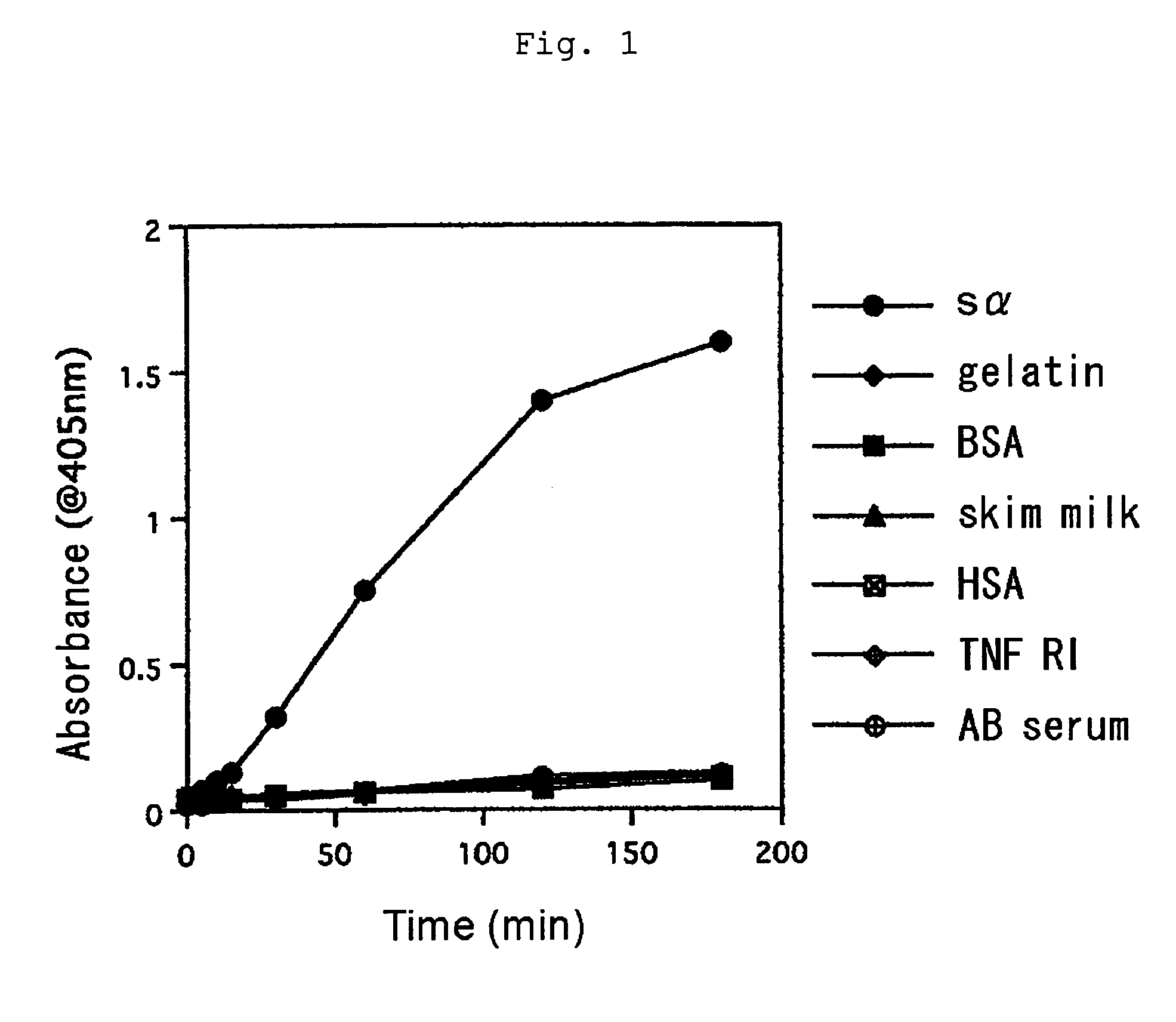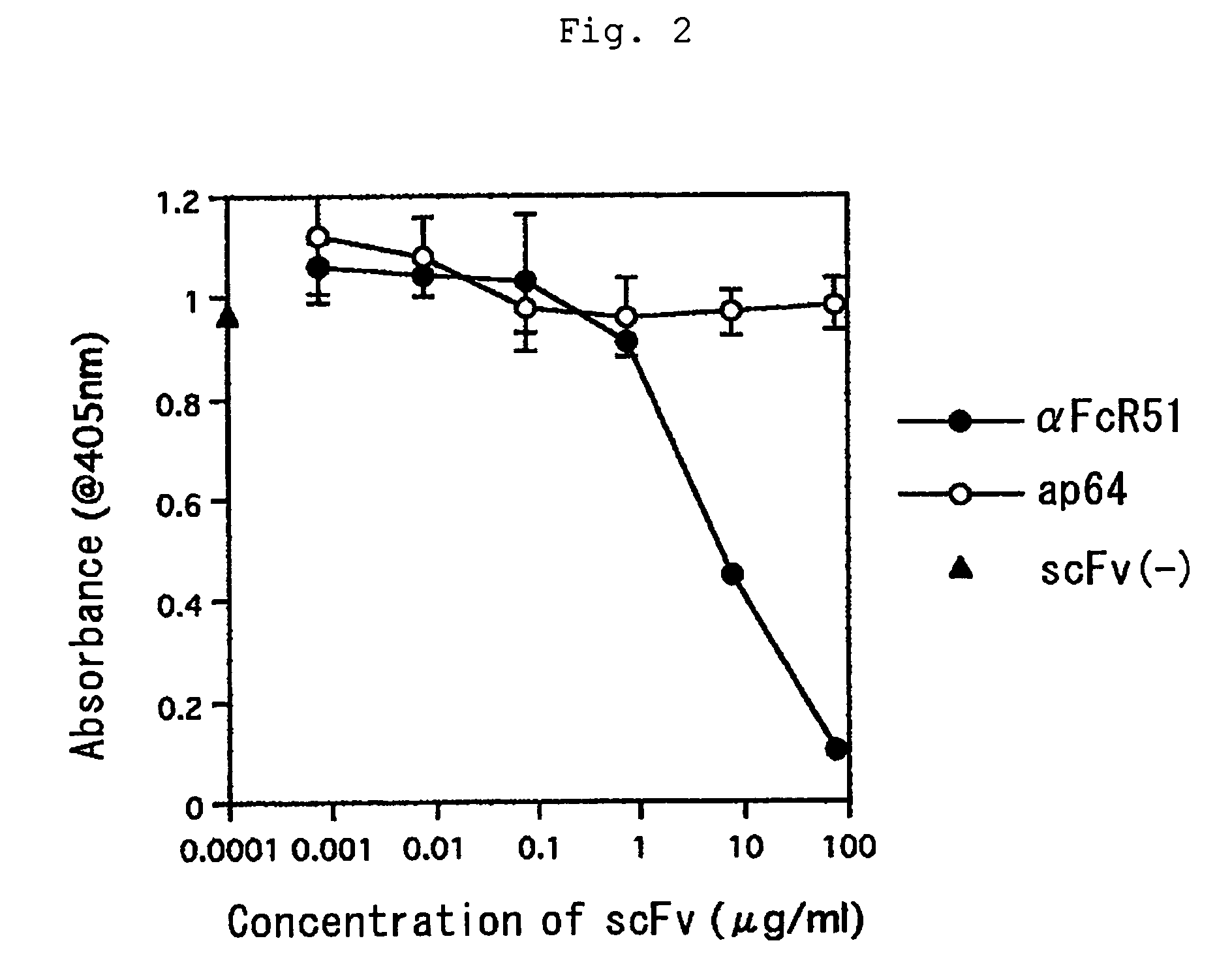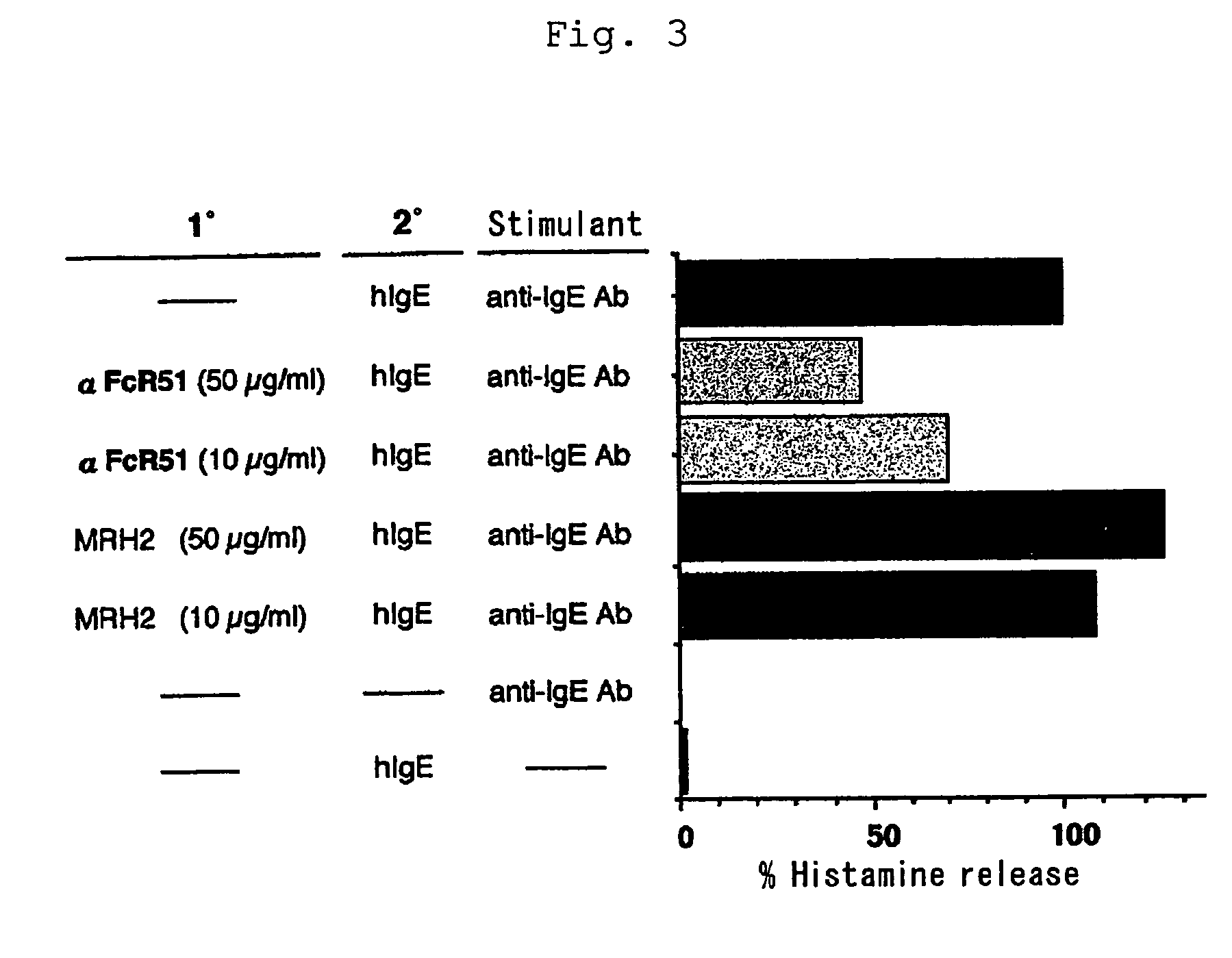Human type antihuman IgE receptor antibody and fragment
a human antiige receptor and antibody technology, applied in antibody medical ingredients, immunological disorders, fused cells, etc., can solve the problems of insufficient efficacy or adverse side effects of conventional drugs, and achieve specific and fundamental efficacy, reduced adverse side effects, and insufficient efficacy.
- Summary
- Abstract
- Description
- Claims
- Application Information
AI Technical Summary
Benefits of technology
Problems solved by technology
Method used
Image
Examples
example
Example 1
Construction of Phage Library from Healthy Volunteers
[0038]A phage library was constructed as reported by J. D. Marks et al., J. Mol. Biol., 222: 581-597, 1991.
[0039]Lymphocytes were separated from peripheral blood from twenty healthy volunteers using Ficoll, washed thoroughly with PBS and treated with ISOGEN (Nippon Gene Co., Ltd.) to prepare total RNAs. The obtained total RNAs were divided into four portions for preparing cDNAs with primers specific for constant regions of human IgG, IgM, κ chain and λ chain, respectively, using first strand cDNA synthesis kit (Pharmacia bio tec). Using the obtained cDNAs as a template, a polymerase chain reaction (PCR) was performed for amplification of genes encoding antibody V regions using specific primers for each combination of either VH (Υ or μ) and JH, Vκ and Jκ, or Vλ and Jλ, as reported by Marks et al.
[0040]Subsequently, the resulting VH (λ or μ) and Vκ genes, and VH (Υ or μ) and Vλ genes, were linked together, respectively, by ...
example 2
Screening
[0041]A soluble fragment of human IgE receptor (FcεRI) α chain (4 μg / mL) was dissolved in 0.1 M NaHCO3 (1 mL) and plated on 35 mm dish (Iwaki) at 4° C. overnight for immobilization. After blocking with 1% BSA / PBS at 20° C. for 2 hours, the dish was washed six times with 0.05% Tween 20-PBS and thereto was added 0.9 mL (1×1012 tu / mL) of the antibody phage library (a solution of single-chain antibody display phages) from healthy volunteers. After washing the dish 10 times with 0.05% Tween 20-PBS, 0.4 mL of glycine buffer (pH 2.2) was added to elute single-chain antibody display phage that bound with FcεRI α chain. The eluted phage was infected to E. coli TG1 at logarithmic phase after adjusting pH with 1 M Tris(hydroxymethyl)aminomethane-HCl, pH 9.1. The infected TG1 cells were centrifuged at 3000×g for 5 minutes. After removal of supernatant, the remaining portions were suspended in 200 μL of 2×YT medium, plated on SOBAG plate and incubated in an incubator at 30° C. overnight...
example 3
FcεRI α Chain ELISA for Screening
[0042]ELISA for screening the isolated clones was performed as described below. An ELISA plate immobilized with FcεRI α chain and a control protein was used for screening. Each 40 μL / well of 2.5 μg / mL FcεRI α chain, 2.5 μg / mL human serum albumin, 2.5 μg / mL human TNFRI or human serum was placed in ELISA plate (Nunc) and the plate was left to stand at 4° C. for 16 hours for immobilization. The immobilized ELISA plate was added with 400 μL / well TBS solution containing 0.5% BSA, 0.5% gelatin and 5% skim milk and left to stand at 4° C. for 2 hours for blocking.
[0043]A sample solution (100 μL / well) containing scFv display phage was added to the plate. After reaction, the sample solution was discarded and the plate was washed five times with a washing solution. The plate was reacted with anti-M13 monoclonal antibody labeled with biotin (Pharmacia) and then with anti-mouse IgG antibody labeled with alkaline phosphatase (AP). After washing five times with a w...
PUM
| Property | Measurement | Unit |
|---|---|---|
| pH | aaaaa | aaaaa |
| temperature | aaaaa | aaaaa |
| dissociation constant | aaaaa | aaaaa |
Abstract
Description
Claims
Application Information
 Login to View More
Login to View More - R&D
- Intellectual Property
- Life Sciences
- Materials
- Tech Scout
- Unparalleled Data Quality
- Higher Quality Content
- 60% Fewer Hallucinations
Browse by: Latest US Patents, China's latest patents, Technical Efficacy Thesaurus, Application Domain, Technology Topic, Popular Technical Reports.
© 2025 PatSnap. All rights reserved.Legal|Privacy policy|Modern Slavery Act Transparency Statement|Sitemap|About US| Contact US: help@patsnap.com



